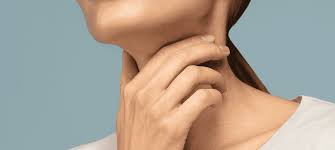This inflammation can cause a range of symptoms including difficulty swallowing, food impaction, and persistent heartburn. As awareness of EoE grows, so does the understanding of its treatment. This article explores the current approaches to managing EoE, offering insights into both medical and lifestyle interventions.
Understanding Eosinophilic Esophagitis
EoE is often triggered by an allergic reaction to certain foods or environmental allergens. It is typically diagnosed through endoscopy, where a doctor can visually inspect the esophagus and take biopsies for histological examination. The presence of eosinophils in the esophageal tissue confirms the diagnosis. Patients with EoE may experience symptoms such as dysphagia (difficulty swallowing), chest pain, and food getting stuck in the esophagus.

Medical Treatments for Eosinophilic Esophagitis
- Dietary ManagementOne of the most effective ways to manage EoE is through dietary modification. An elimination diet, where specific foods are removed from the diet and then gradually reintroduced, can help identify food triggers. Common allergens include dairy, wheat, soy, eggs, and nuts. In some cases, a more structured approach like the 6-food elimination diet (removing the six most common food allergens) may be recommended.
- Medicationsa. Proton Pump Inhibitors (PPIs): PPIs are often used initially to manage EoE. They reduce stomach acid and can alleviate symptoms by decreasing esophageal inflammation. Despite not being a direct treatment for EoE, PPIs can help if acid reflux is contributing to symptoms.b. Topical Corticosteroids: These are anti-inflammatory medications applied directly to the esophagus through swallowed steroids like fluticasone or budesonide. They help reduce eosinophil levels and inflammation. This treatment often involves the use of a metered-dose inhaler (MDI) or dissolvable tablets.c. Systemic Corticosteroids: For more severe cases, oral corticosteroids like prednisone may be prescribed for short-term management to control significant inflammation. However, long-term use is generally avoided due to potential side effects.d. Biologic Therapies: Recently, biologic therapies targeting specific immune responses, such as mepolizumab and dupilumab, have shown promise. These medications work by inhibiting the action of eosinophils and are typically considered for patients who do not respond to other treatments.
- Allergy Testing and ImmunotherapyAllergy testing can help identify specific allergens contributing to EoE. In some cases, allergists may recommend immunotherapy (allergy shots) as a long-term treatment strategy, though this approach is less common for EoE compared to other allergic conditions.
Lifestyle and Dietary Modifications
- Avoiding TriggersOnce food triggers are identified through an elimination diet or allergy testing, it is crucial to avoid these foods to prevent symptom flare-ups. Working with a nutritionist can help ensure a balanced diet while eliminating potential allergens.
- Eating HabitsAdopting certain eating habits can also aid in managing EoE. Chewing food thoroughly, eating smaller and more frequent meals, and staying hydrated can help reduce symptoms. It is also beneficial to avoid eating close to bedtime to minimize the risk of esophageal discomfort.
- Monitoring and Follow-UpRegular follow-ups with a gastroenterologist are important for monitoring the effectiveness of treatment and making necessary adjustments. Endoscopic evaluations and biopsies may be conducted periodically to assess inflammation and eosinophil levels.
Living with Eosinophilic Esophagitis
Living with EoE can be challenging due to the need for ongoing management and lifestyle adjustments. However, many patients find relief through a combination of medical treatments and dietary changes. Support groups and counseling can also be valuable resources for coping with the emotional and social aspects of living with a chronic condition.
In conclusion, managing eosinophilic esophagitis involves a multifaceted approach combining dietary modifications, medication, and lifestyle adjustments. With advancements in treatment options and a better understanding of the condition, patients can achieve significant symptom relief and improve their quality of life. Regular collaboration with healthcare providers and adherence to treatment plans are key to successful management of EoE.
